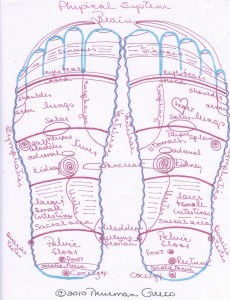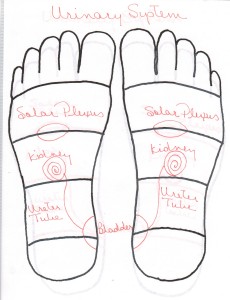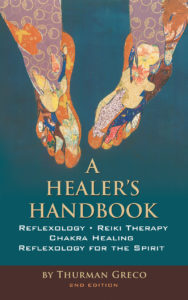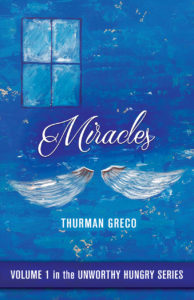Buyer Beware – 6 Things to Know About Eating Better
In another time I lived in the interior of Venezuela – 50 miles from headhunters in 1 direction and 50 miles from a grocery store in another direction.
Milk for my family was delivered weekly by a Spaniard who owned an area dairy. I got to know him and his cows very well. It wasn’t that I considered him to be so interesting or entertaining. I was afraid of getting milk infected with tuberculosis. I had 2 toddlers and I was doing everything I could to keep them healthy.
Most of us, when asked, will admit to eating a nearly perfect diet. Delve deeper, and you’ll find that everyone’s diet is different. You’ll also find many of the diets are not healthy…some are not even safe.
It’s hard to know which is the correct diet. There are thousands out there. Many are touted as being the best. We can go into a large book store or library and find an extremely generous selection of cookbooks, each promoting a different way of eating. Top off that with the TV Food channels and the internet and everything becomes confusing.
So, what do you do as a reflexologist when your client partner begins to discuss diet or ask questions about digestion issues?
I offer a few sane suggestions for your own diet as well as that of your client partners, friends, neighbors, and anyone else trying to eat better:
Eat whole foods that are fresh and locally grown. I realize that you may have heard/read this before but I offer new twists on the same old sentence.
Eating locally grown food is important. It’s important to not only know that the food is locally grown, but it’s important to know which farm the food came from.
Can you afford a CSA? If your household is too small, split a membership.
Eating locally grown or raised foods includes
fresh vegetables
fresh fruits
whole grains
beans
fish
lean red meat
dairy products.
When you eat whole, fresh, locally grown foods, you’ll be eating food which experiences less processing, packaging, and shipping.
Foods grown in your area can be picked later, and eaten sooner. Overall, this means a better product.
When I think of fresh foods, I think of health promotion. It’s much better to eat an apple from nearby than to eat pears, apples, strawberries or whatever from South America or China.
And, if you know the farm this food comes from, you’re even better off because you’ll know about the pesticides used. You’ll never be able to learn what pesticides were used on food that came from Chile or China, or any other foreign location, no matter what the label tells you. Our government sends few to no inspectors to faraway places to verify what they say they do.
When you eat whole, fresh, locally grown foods, you’ll be eating better quality food offering the opportunity to protect your heart, stabilize your blood sugar, boost your brainpower, and generally improve your health.
Farmers shipping their products long distances focus on growing foods that travel well as opposed to products that taste better.
Begin your quest for locally grown food at a farmers market.
Don’t be shy. Ask your grocery store produce manager where the food comes from. It goes without saying that we need pure foods if we can get them. Organic, non-GMO, etc., are important.
At the very least, buy organic when you can. Here again, it helps to know which farm the food comes from. The term “organic” doesn’t mean what it did in times past. Many farmers claim to sell organic foods today that could not make that claim in the past. This is because the government has relaxed the organic designation guidelines.
If you’re on a budget, it’s important for some foods to be organic. Foods needing to be organic include:
apples
bell peppers
celery
chard
cherries
domestic blueberries
imported grapes
kale
lettuce
nectarines
peaches
potatoes
spinach
strawberries
Foods that do not necessarily need to be eaten in the organic state include:
asparagus
avocados
cabbage
cantaloupe
eggplant
grapefruit
kiwi
mango
onions
pineapple
sweet corn
sweet onions
sweet peas
sweet potatoes
watermelon
We eat many foods over time. I’ve only listed a very few items. However, the 2 lists offer insight into what constitutes a food needing to be organic and a food that may not.
Staying away from boxed and canned foods is important. They are often filled with additives which are not good for the human body. Many boxed and canned items aren’t even foods. They’re products which have been manufactured to eat. In the 21st century, just because something is sold in a food store to eat doesn’t mean it’s a food.
Food shopping in today’s world not only involves selecting items which are foods – whole, fresh, and local – but also being careful where you buy these items. Just because a store claims to be health oriented doesn’t mean that everything it sells is nutritious or even safe.
Approach each item with a questioning attitude. Read the label. If there are a lot of words which are hard to pronounce, return the item to the shelf.
Your grocer is in business to make $$$. Food is put on the shelves to sell. Just because it’s on the shelves doesn’t guarantee that it’s healthy or even safe.
This doesn’t mean that eating can’t be fun. It can be. It’ll be even more fun once you know exactly what you’re eating.
If you can, buy your breads from a local bakery which uses organic whole grains.
Become knowledgeable about your dairy, meat, and fish products. If at all possible, stay away from fish that are farmed.
If you eat meat, eggs, cheese, try to get products coming from animals that are free range, organic fed.
Purchase eggs coming from cage free hens.
Ham, bacon, and smoked fish should have no synthetic nitrates or nitrites.
Meats should be hormone free, free range grazed, and antibiotic free.
I realize that not everyone has access to these foods. We can’t eat what we don’t have access to. I also realize that these foods may be expensive. We also can’t eat what we can’t buy. Everyone faces choices when it comes to food shopping. Staying away from processed foods can free up some funds for fresh, whole, local.
It’s okay to be a food snob only wanting the most nutritious, healthiest food available.
Thanks for reading this blogged book.
Please refer this post to your preferred social media network.
I hope you found this article helpful. Please leave your comments below and check out the other posts.
Don’t forget to join the email list.
Other blogs you may enjoy:
Peace and food for all
Thurman Greco











